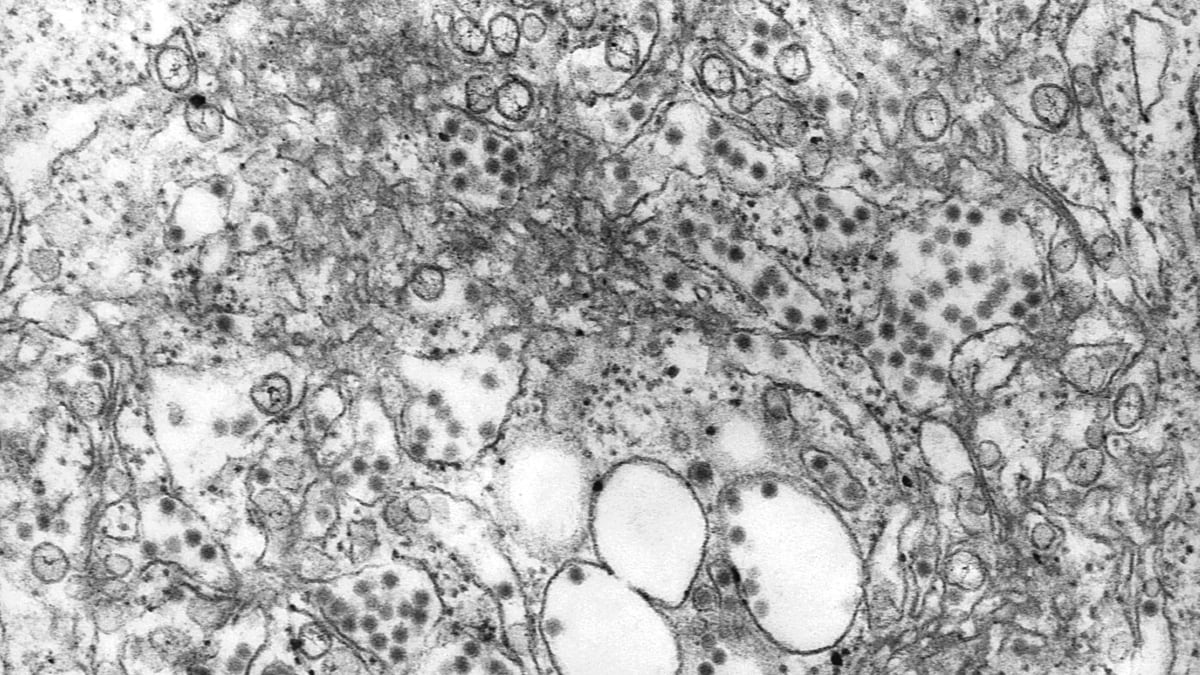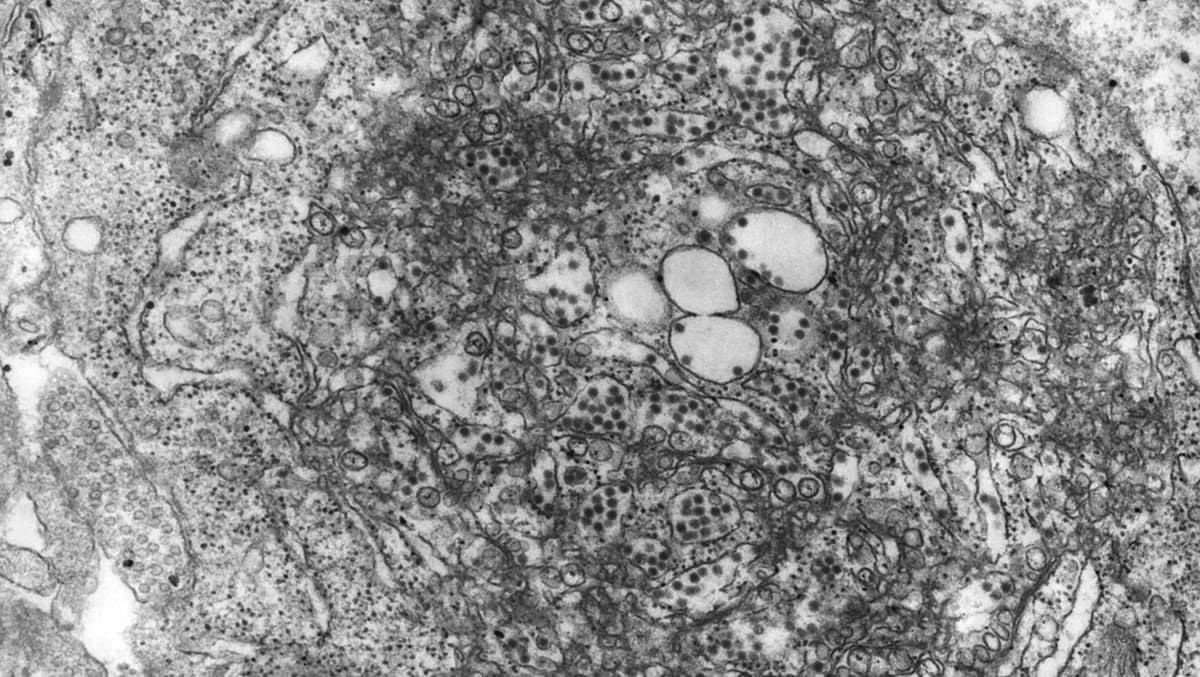Key points
- Tick-borne encephalitis (TBE) virus is a tick-borne flavivirus.
- It is maintained in the environment between Ixodes species ticks and small rodents.
- Humans are dead-end hosts but can rarely transmit the virus through blood transfusion, organ transplantation, and breastfeeding.
- Other rare modes of transmission include through consumption of unpasteurized milk or cheese from infected goats, sheep, or cows, through slaughtering of infected animals, or from exposure to the virus in the laboratory.

Virus
TBE virus disease is caused by a tick-borne flavivirus (genus Flavivirus, family Flaviviridae). There are three main subtypes of TBE virus, European, Far Eastern, and Siberian.
TBE virus has a single-stranded, positive-sense RNA genome. The virus particles are spherical and have a diameter of 50 nm.

TBE virus can be found in parts of the region stretching from western and northern Europe to northern and eastern Asia. It is related to Powassan virus that occurs in North America and isolated locations of Russia.
Transmission
Ticks, specifically hard ticks of the family Ixodidae, transmit TBE virus. Ticks become infected when they feed on blood from infected vertebrate hosts, particularly small rodents, and can subsequently transmit the virus during the next blood meal. Ticks can also get the virus transtadially (from larva to nymph to adult ticks), transovarially (from adult female tick to eggs), or when cofeeding on infected animals. The highest period of tick activity and risk of spread is during the warmer months from April through November.
Infection can also follow consumption of unpasteurized milk or cheese from infected goats, sheep, or cows. Other rare modes of transmission include through slaughtering of infected animals, blood transfusion, organ transplantation, breastfeeding, or from exposure to the virus in the laboratory.
